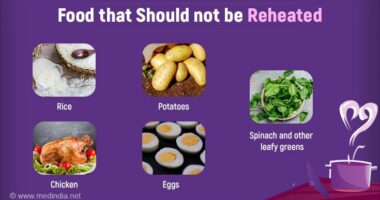
If left untreated, people with eating disorders may develop life-threatening problems. Here are signs that indicate you’re suffering from an eating disorder.
An eating disorder is a complex and serious mental health issue that takes a significant toll on the emotional and physical health. Individuals with eating disorders develop an unhealthy relationship with food, their weight and appearance. The good news is eating disorders can be cured with the right approach, however, if left untreated, people with the condition may develop life-threatening problems.
In this article, Dt. Komal Malik, Head – Dietician, Asian Hospital Faridabad, enlightens us about the types of eating disorders, and the warning signs and symptoms to look out for.
Types of eating disorders
Anorexia, binge eating and bulimia are all types of eating disorders. Some people are even likely to have more than one type of eating disorder.
- Bulimia nervosa: People with this disorder are very concerned about their external appearance. After they have had food or think that they ate huge quantities of food in a short period of time, they force themselves to get rid of the calories in some of the way such as taking laxatives, vomiting or hitting the gym for extreme exercise.
- Anorexia nervosa: On the other hand, sufferers of this condition severely limit their calorie intake and sometimes even starve themselves. Anybody is likely to develop this condition which is characterised by a strong urge at weight loss and not willing to have desired quantities of food required for your body type and level of exercise.
- Binge eating disorder (BED): Individuals with this condition have obsessive eating habits. They either consume or are under the impression they had big quantities of food in a short while. However, they don’t make an attempt to vomit or exercise heavily to burn off calories, instead they move around with an uncomfortable feeling of fullness and feel regretted, remorseful or embarrassed.
Signs and symptoms of eating disorders
It’s not always easy to identify someone with an eating disorder. They may try to hide the condition hide out of shame or guilt. However, some of the behaviours linked with eating disorders are:
- Counting calories
- Fasting
- Skipping meals
- Avoiding certain food groups or binge eating
- Frequent trips to the bathroom during or after eating
- You may stop eating with other people
- Be very sensitive to comments about your body and weight or
- Start wearing ill-fitting clothes.
Some of the physical signs of the condition include:
- Changes in weight or rapid weight loss
- Disrupted periods
- Feeling light-headed or faint
- Constantly feeling tired and not sleeping well and
- Being cold even in warm weather.
Emotional signs include obsession with weight, body appearance or food, meal-time anxiety, feeling out of control around food, distorted body image, using food as a source of comfort or as self-punishment.
READ RELATED: 8 Seafood Chains That Serve the Best Steaks
When to see a doctor
People with eating disorders may find it difficult to manage or overcome the condition on their own. The likelihood that you will fully recover increases the earlier you begin therapy. Moreover, with symptoms alone it might not be able to confirm an eating disorder diagnosis even in the presence of some occasional problematic eating behaviours resemble symptoms of an eating disorder. But one’s health and welfare might still suffer as a result of these unhealthy eating patterns.
In the event that your unsatisfactory eating patterns disturb you, negatively affect your life or health, or if you have any reason to believe that you could have an eating disorder, you should consult with a doctor as soon as possible.
Total Wellness is now just a click away.
Follow us on
Don’t Miss Out on the Latest Updates.
Subscribe to Our Newsletter Today!
window.addEventListener(‘load’, (event) => {
$(‘#commentbtn’).on(“click”,function(){
(function(d, s, id) { var js, fjs = d.getElementsByTagName(s)[0]; if (d.getElementById(id)) return; js = d.createElement(s); js.id = id; js.src = “//connect.facebook.net/en_US/sdk.js#xfbml=1&version=v2.3”; fjs.parentNode.insertBefore(js, fjs);}(document, ‘script’, ‘facebook-jssdk’));
$(“.cmntbox”).toggle();
});
});









